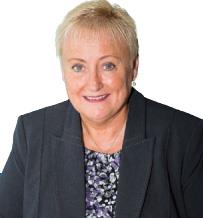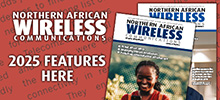11 February 2025

Linda Clark, MD, Mobile Mark Europe
During the Birmingham 2022 Commonwealth Games, I saw the essential role antenna infrastructure and technology played in providing reliable connectivity and access for visitors as well as underpinning critical communications. Just as in Africa, the requirement for connectivity in the UK was a challenge that had to be achieved between venues and while users were on the move.
The 2022 Commonwealth Games was attended by 1.3 million people, the overwhelming majority of whom wanted to connect their portable devices to the internet. This is a major challenge to all mega events, where people now expect to have access to fast, reliable communications and transmission capability. How this is achieved often must depend on what systems are already available at a venue and its environs. Options can include Wi-Fi 6 as an enhanced version of the 2.4/5GHz spectrum - 2.4GHz provides the most coverage at slower transmission speed, while 5GHz gives less coverage but higher data transmission speed - to allow multi-user connectivity. Meanwhile, LTE and 5G provide good communications with the capability for expansion via temporary cell sites. There are also Distributed Antenna Systems (DAS), widely used in stadia, which facilitate multipleuser, high speed connectivity. The network used is often determined by what is already available and the resources available to pay for access to a network.
Whether we’re looking at the Commonwealth Games or the Africa Cup of Nations, critical comms are, as it says on the tin, critical. Police, security, emergency and transportation services rely for data transmission and communications on network accessibility and reliability. Here, signal connection is important, as is the security of the network provided by the network operator. However, the most secure network is useless if users can’t connect to it or if signals don’t get through. Antenna and system design are critical for ensuring communications from, for instance, first responders being received from all locations at an event. Thus, there is a need for robust systems; and if resources permit a degree of redundancy and appropriate back-up systems.
One success of the 2022 games was transport logistics, with columns of buses efficiently and economically moving a million competitors, fans, officials and volunteers between events. Underpinning this was reliable, wide area communications between vehicles and the control centre. The games used bus providers from all over the UK to provide a free transport service.
I used these buses both as a volunteer and spectator and found the communications worked well, particularly given that the different bus operators had different communication, tracking and location systems. GPS/GNSS location solutions with LTE cellular systems for information communication with the control room were used to provide passengers with real time information at smart bus shelters. The buses were also equipped with Wi-Fi for passenger use. Some operators had incorporated Mobile Mark’s LTM946 antenna, offering 4x4 MIMO for 5G cellular along with 6 Wi-Fi 6e elements for data distribution, collection and a GNSS element for location or timing.
Modern buses come with an array of technology, electronic ticket validation, passenger counting, CCTV, VHF and UHF communication links. This is true the world over, Africa included. The hardware being concealed within bus ceilings and side panels utilising high performance antennas inside and outside. Data exchange from bus to control room and back requires appropriate on-board equipment to give both operator and customer what they need. The challenges are cost and installing multi-band high performance, durable antenna systems to deal with film and video streaming by customers and control room communications. High demand for connectivity and network pressure peaks, such as half-time breaks or opening/ closing ceremonies, requires robust solutions with deployment of temporary cell sites, or the use of DAS being available options for organisers.
Looking at the critical comms aspect of the Games, it was a complex operation between police, military, first responders and in house security that was underpinned by cellular and TETRA two-way radio that proved successful in maintaining communications with all involved in making the games safe, secure and enjoyable.
Looking forward from Birmingham 2022 and at challenges for antenna solutions for superfast communications at mega events, the number of elements required for future lightning-fast data transmission rates, alongside increasing frequency ranges, are going to be challenging. This is as true in the UK as it is in Europe, Asia, and Africa. 5G mmWave running at high frequency and extremely high data rates pose a challenge as radio waves at such frequencies act more like directed light from a bulb, rather than receive anywhere radio waves. These characteristics require both the send and receive antennas to be pointed at each other.
Consequently, a new technology named ‘Smart Antennas’ is emerging. This uses automated beam steering, which electronically aims the antenna at users’ devices to achieve maximum data rates. The system uses Massive MIMO arrays, which have dozens or even hundreds of individual radiating elements which can be switched and aimed as required.
With the growth of Smart Cities and the prevalence of IoT, the demand for appropriate antennas is a design challenge, as with 5G using MIMO technology requiring multiple data channels for transmitting data concurrently. In the antenna industry we are working to satisfy the needs of users and the technology for connectivity. Be that at an event, on a bus, in a smart building or cheering the winners at the finishing line - innovative developments will remain an essential part of these solutions, in the UK, the USA, Africa and beyond!






